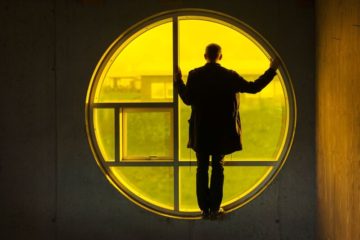
Originally published in the Marina Times San Francisco in January 2018
Through February 11, The Fort Mason Center for Arts & Culture brings three video installations by award-winning British artist Isaac Julien to the Bay Area. Julien’s films explore the way capitalism and information influences people’s everyday lives. Three separate galleries will feature three films, “Playtime”, 2017 (67 minutes), “KAPITAL”, 2013 (31 minutes), and Better Life (Ten Thousand Waves), 2010, (51 minutes). Playtime is a twist on Jacques Tati’s 1967 film and takes place in London, Reykjavik and Dubai, places feeling the effects of present-day economic change. Real-life individuals react to market collapse in each city under different circumstances. KAPITAL shows Julien at a public talk in the Hayward Gallery in London with Marx scholar David Harvey where they discuss the impact of modern capitalism in the contemporary world. Better Life (Ten Thousand Waves) features footage from a call and rescue helicopter during the 2004 Morecambe Bay tragedy when 22 Chinese cockle pickers died in rising tides off the coast of England. Julien collaborated with prominent Chinese artists reflecting what it means to seek a “better life.”
Sanctuary, which runs through March 11, features artist designed rugs that, utilizing traditional materials and techniques, examine the theme of sanctuary during an era of increasing migration clashing against attitudes of isolationism and nationalism. Many of the artists have been migrants and refugees themselves; they represent racial, cultural and religious diversity under the banner of a single idea. Rugs traditionally represent the places and people who use them and are deeply ingrained with cultural symbolism. 36 international artists will be on display in the gallery, a decommissioned military chapel where the rugs take on the symbolism of prayer and worship while the viewer considers place, identity and belonging. The symbolism of the rug–transportable, able to be rolled up–can be taken with a person with relative ease and reinforces the sense of transient populations and migration. The four-by-six wool rugs make us consider the right to safe haven and all human beings natural desire for home and a sense of acceptance.
“Rugs speak broadly to cultural heritage, family history and transportable identity,” says Cheryl Haines, FOR-SITE executive director. “At a moment in time characterized by growing nationalism and isolationism, we must acknowledge the importance of recognizing our common humanity, as well as the need for compassion and the provision of safe harbor for the displaced.”